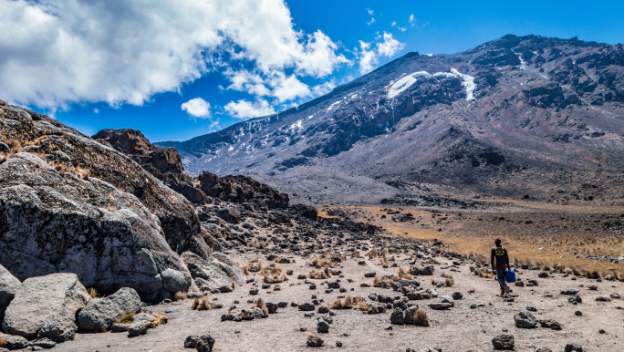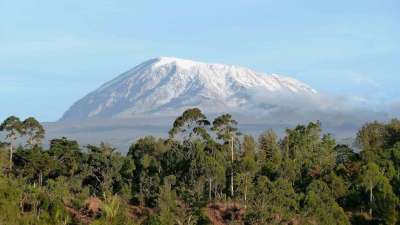Climbing the highest freestanding mountain in the world can be done via the Lemosho, Machame, Marangu, and Rongai routes. Conquering one of the fabled’ Seven Summits’ on Earth, the iconic Mount Kilimanjaro, requires several factors in choosing which route suites you best. Selecting a route is a tough choice for most. To find the best Kilimanjaro route for you, considerations should be taken for the route’s difficulty, scenery, and popularity. So, here is our guide to 4 routes of summiting Mount Kilimanjaro with a team of professional mountain certified guides and porters incorporating the ideal fusion of acclimatisation and summit success rate.

Photo credit: Shuttershock
Marangu Route: The Only Route To Offer Permanent Hut Accommodation
Marangu route also known as the “Coca-Cola”route, is unique in that it provides extra comfort with the only route offering permanent sleeping huts in dormitory style accommodation. Many favour the Marangu route because it is considered to be the easiest path on the mountain, given its gradual slope. It gives spectacular vistas of Kilimanjaro’s Mawenzi and Kibo peaks that adds to its advantage. The 7 days Marangu Route Itinerary with its longer acclimatisation is preferable if this is to be your first-time hiking Kilimanjaro. Marangu route is a classic trek on Mount Kilimanjaro. It is the oldest, most well-established route. It has the least scenic variety of all the routes because the ascent and descent are done on the same path and it is the most crowded route for that reason.

Photo credit: Shuttershock
Lemosho Route: The Most Beautiful Route
The Lemosho route is one of the newer routes on Mount Kilimanjaro. Lemosho climbs through different climate zones and begins on heaths and winds further across alpine meadows to ascend to the arctic zone near Uhuru Peak. Climbers encounter low traffic until the route joins the Machame route. Afterwards, Lemosho follows the same route through Lava Tower, Barranco and Barafu, known as the southern circuit. The descent, in turn, passes through rainforest. All this makes this route the most scenic on Kilimanjaro. Lemosho offers the smoothest acclimatisation and the highest success rates. It is considered the most beautiful route on Kilimanjaro and boasts panoramic vistas on various sides of the mountain. It is a favourite route due to a great balance of low traffic, scenic views and a high summit success rate. Thus, Lemosho comes highly recommended.
Camp and climb in luxury! Spend your days tackling the peak and by night rejuvenate to hot showers, fresh hot meals and cosy warm beds with our Luxury Mount Kilimanjaro Ascent (Lemosho Route) 9D8N.

Photo credit: Shuttershock
Machame Route: The Most Popular Route
Machame Route also known as Whiskey Route, at a total length of 65km, is one of the most popular for Kilimanjaro climbers. Compared with Marangu, the days on Machame are longer and the walks are steeper. The Machame route is considered a difficult route which makes it ideal for more adventurous trekkers with some hiking experience. The route traverses underneath Kilimanjaro’s southern ice field before summiting. The minimum number of days required for this route is six days, although seven days is recommended for an extra day of acclimatisation. The Machame route is scenically beautiful and varied. Read more on our 8 Days Kilimanjaro Climb Machame Route giving a higher summit success rate due to one extra day for acclimatisation compared to shorter Machame route trekking.

Photo credit: Shuttershock
Rongai Route: The Only Route To Approach The Summit From The North
Rongai Route 7 Day Trek is the only route to approach Kilimanjaro from the north just at the Kenyan border. You’ll trek past the second-highest point in Tanzania, Mawenzi, while giving sweeping views of the mountain’s rainforest. The gentle gradient and its gradual acclimatisation is an attractive factor to safely summit the highest point of Africa – Kilimanjaro’s Uhuru peak, at 5,895 m. It is great for hikers with previous exposure to high altitude and offers an escape from fellow climbers, as it is the most remote and desert route. It is an ideal route for those in pursue of a more remote hike and for those who are climbing during the rainy season as the north side receives less precipitation. The minimum number of days required for this route is six days, and seven days are recommended.






